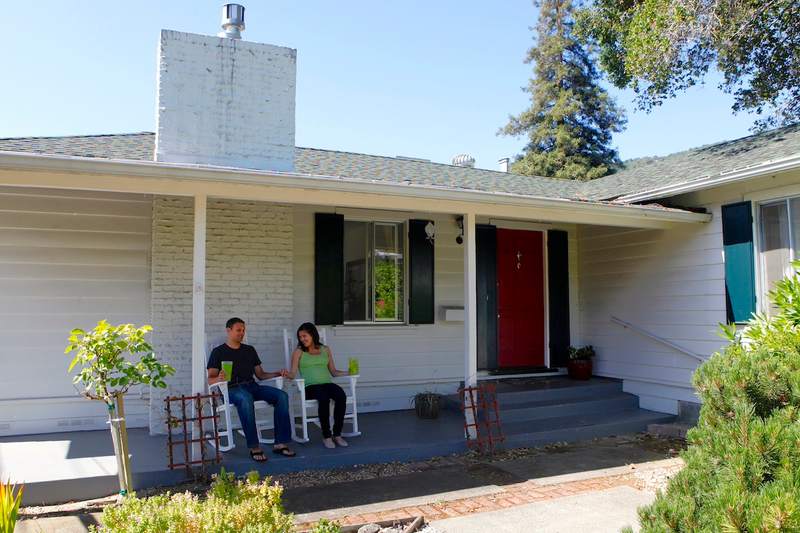For borrowers with a Federal Housing Administration (FHA) loan, mortgage insurance is part of the cost of buying a home. That’s the bad news. The good news? Homeowners may be entitled to a partial refund on their initial FHA loan if they successfully apply for an FHA Streamline Refinance. The FHA mortgage insurance premium (MIP) refund chart outlined below has more details on the amount borrowers working with these two loan products can expect to receive.
Let’s start, though, by simply looking at what an FHA MIP refund is. Then, we’ll explain how you might be able to get one.
What Is An FHA MIP Refund?
Due to their relatively low interest rates, fairly relaxed debt-to-income ratio (DTI) and credit score requirements, and low minimum down payment, FHA loans can be a great option for those who meet certain eligibility requirements. However, borrowers are responsible for two types of mortgage insurance payments when utilizing any FHA loan to finance a home purchase. Here’s the breakdown:
- Upfront mortgage insurance premium (UFMIP): This is 1.75% of the loan amount, due at the time of closing. Borrowers can choose to finance this amount and bring less cash to closing.
- Annual mortgage insurance premium (MIP): This is your annual premium, spread out over 12 months and added to your monthly mortgage payment. Your premium here is based on multiple factors and varies accordingly, but it’s less than you’ll pay in UFMIP.
All FHA borrowers must pay a UFMIP and make ongoing MIP payments, but homeowners who refinance their original FHA loan into an FHA Streamline Refinance may become eligible for an MIP refund.
See What You Qualify For
Buy A Home
Discover mortgage options that fit your unique financial needs.

Refinance
Refinance your mortgage to have more money for what matters.
Tap Into Equity
Use your home’s equity and unlock cash to achieve your goals.
What Is An FHA Streamline Refinance?
An FHA Streamline Refinance is a mortgage refinance backed by the FHA. This type of refinance allows you to rework your loan without an appraisal and quickly take advantage of a lower interest rate.
As with every FHA loan, homeowners who close on their FHA Streamline Refinance must pay a new upfront MIP and continue to make monthly MIP payments. However, the MIP refund can help take some of the financial “sting” out of having to make these payments for a second time.
FHA Streamline Refinance MIP Refund Chart
The amount of refund you receive will be a percentage of your original MIP, with the percentage determined by how long you had your original FHA mortgage. The longer you have your original FHA mortgage, the less of a refund you can expect to receive on your refinance.
You can see the gradual decrease in refund amount by reviewing the following MIP refund chart for FHA refinances.
Months After Closing | MIP Refund |
|---|---|
1 | 80% |
2 | 78% |
3 | 76% |
4 | 74% |
5 | 72% |
6 | 70% |
7 | 68% |
8 | 66% |
9 | 64% |
10 | 62% |
11 | 60% |
12 | 58% |
If 18 months have passed since closing, your MIP refund would be 46%. Twenty-four months after closing is 34%, 30 months is 22%, and 36 months is 10%. The MIP refund continues to drop 2% for every month up to 80 months.
Find out if an FHA loan is right for you.
See rates, requirements and benefits.
How To Calculate Your MIP Refund
Using the chart above for reference, let’s consider some real-life examples of the MIP refund a homeowner can bank on getting.
For the FHA upfront MIP refund chart below, we’ll use the example of a homeowner who bought a $260,000 home with a 5% down payment. The result is a total mortgage of $247,000. Since all FHA borrowers pay 1.75% in upfront MIP, this homeowner paid an UFMIP of $4,323 at closing. The monthly MIP cost is $164 with a cost factor of 0.80%.
Mortgage age in months | % of refund | Amount of refund = $4,323 â % of refund | Refinance amount (based on mortgage amortization) | New MIP = amount of new loan â 1.75% | New upfront MIP = New MIP − MIP refund | New monthly MIP |
|---|---|---|---|---|---|---|
12 | 58% | $2,507.34 | $243,349.27 | $4,258.61 | $1,751.27 | $162.23 |
24 | 34% | $1,469.82 | $239,512.15 | $4,191.46 | $2,721.64 | $159.67 |
36 | 10% | $432.30 | $235,479.11 | $4,120.88 | $3,688.68 | $156.99 |
To summarize, you can calculate how much your FHA MIP refund will lower your new loan’s upfront MIP amount. This calculation is possible by subtracting the amount you receive (based on how long you’ve had your current FHA loan) from the upfront MIP your new loan requires.
Who’s Eligible For An FHA MIP Refund?
As with any FHA loan product, an FHA MIP refund carries some requirements. To qualify for the FHA MIP refund:
- The refinance must provide the homeowners with a net tangible benefit.
- The borrower must’ve closed on their FHA loan less than 36 months ago.
- The borrower must be 100% up to date on their mortgage payments.
- The borrower can’t have any foreclosures in their credit history.
- The borrower must be refinancing to another FHA loan, as opposed to a different type of government-backed loan or a conventional loan.
Find A Mortgage Today and Lock In Your Rate!
Get matched with a lender that will work for your financial situation.
Does An FHA Refinance Make Sense For You?
Because refinancing a loan comes with a new set of underwriting and loan costs, it’s important to run the numbers to ensure an FHA refinance would make sense for your situation. Usually, this means refinancing to a loan with a lower interest rate.
Meeting eligibility requirements doesn’t mean this is the right financial product for you. Refinancing only makes sense when homeowners receive a net tangible benefit. In other words, they recoup the cost of the loan refinance and enjoy savings over the life of the loan.
Find out if an FHA loan is right for you.
See rates, requirements and benefits.
Potential Downsides To FHA Streamline Loans
FHA Streamline Refinance loans are just one option available to homeowners seeking to refinance their home loan. An FHA Streamline Refinance has some downsides worth considering, too. For example:
- Before you can apply for an FHA Streamline, there’s a 7-month waiting period from the date of the original closing.
- Homeowners can’t get more than $500 cash back at closing, so they’ll need to factor in cash out-of-pocket for most closing costs.
- As with any new FHA loan, you’ll also have to pay another upfront MIP and monthly MIP, no matter how much equity you have in your home.
With these limits, it’s best to run the financials to see if refinancing to an FHA-specific product is the best deal.
Alternatives To Streamline Loans
A conventional mortgage is the chief alternative to an FHA Streamline Refinance. Homeowners at 20% home equity (or a loan-to-value ratio of 80% or less) may save more by refinancing to a conventional conforming mortgage loan to avoid paying mortgage insurance altogether. How does this work? Once a borrower reaches 20% equity in the home, conventional lenders no longer require private mortgage insurance (PMI).
To determine which scenario saves you more money, you’ll need to do your financial homework. Calculate how much refinancing to a conventional mortgage would save you on a monthly basis and how much you’d need to bring to closing. Then, use our FHA MIP Chart to determine your new upfront MIP and new monthly MIP calculations. From there, you can figure out how much you’d save at closing and on a monthly basis by refinancing your FHA loan to a conventional loan.
The FHA MIP Refund Isn’t A Cash Refund
When you hear the word “refund,” perhaps you think of money from the IRS that comes during tax season. The MIP refund isn’t cash you receive in the mail or at closing, however. Instead, it’s a credit that gets applied to the upfront MIP charge on your new mortgage.
Also, you shouldn’t see the refund as an incentive to complete an FHA Streamline Refinance. Rather, think of it as a reduction in the cost of a refinance you’d be doing anyway. An FHA Streamline Refinance is only worth it if it makes the most financial sense for the borrower, regardless of the MIP refund.
Using Your Refinance To Help With Loan Closing Costs
You must pay the upfront MIP at closing, which is where the MIP refund can really help reduce costs. Fortunately, with the Streamline Refinance, the upfront mortgage can be financed into the loan. For those low on cash, or those who want to keep more cash on hand, rolling UFMIP costs into your loan refinance can be a savvy money move.
The Bottom Line
If you’re a current FHA loan holder and want to refinance to the FHA Streamline, you could benefit from the MIP refund credit, which applies to your new upfront MIP. Bear in mind, though, that even with the MIP refund, you may save more money with a mortgage option that’s free of monthly MIP payments entirely – particularly if you have a substantial amount of equity in your home.

Miranda Crace
Miranda Crace is a Staff Writer for Rocket Companies, bringing a wealth of knowledge about mortgages, personal finance, real estate and personal loans for over 10 years. Miranda is dedicated to advancing financial literacy and empowering individuals to achieve their financial and homeownership goals. She graduated from Wayne State University, where she studied PR writing, film production and film editing. In her spare time, Miranda enjoys traveling, actively engages in the entrepreneurial community, and savors a perfectly brewed cup of coffee.












